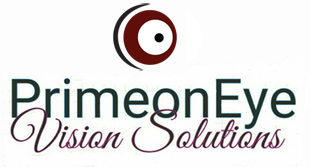Dry eyes
Dry eyes are caused by the reduction in the quantity or quality of tears produced. The primary symptom of dry eyes is burning. Intermittent blurry vision, redness, sandy or gritty feeling and sensitivity to light can also be symptoms. Aging can be a factor involved with dry eyes as well as hormones. Women are more likely to have dry eyes than men, especially post-menopausal women and women that are pregnant or nursing. Artificial tears are used to help prevent irritation. For severe dry eyes, prescription lubricants may also be prescribed
Ocular Allergies
Ocular Allergies can be a problem seasonally or may flare up due to problems with your contact lenses or solutions. The key symptom of ocular allergies is itching and often burning eyes. The best treatments for ocular allergies include prescription eye drops and changes in lens materials or solutions depending on the cause of the allergy. New face products and make-ups can also cause mild allergies.
Myopia (Nearsightedness)
Nearsighted individuals typically have problems seeing well at a distance and are forced to wear glasses or contact lenses. The nearsighted eye is usually longer than a normal eye, and its cornea may also be steeper. Therefore, when light passes through the cornea and lens, it is focused in front of the retina. This will make distant images appear blurred. There are several refractive surgery solutions available to correct nearly all levels of nearsightedness.
Hyperopia (Farsightedness)
Farsighted individuals typically develop problems reading up close before the age of 40. The farsighted eye is usually slightly shorter than a normal eye and may have a flatter cornea. Thus, the light of distant objects focuses behind the retina unless the natural lens can compensate fully. Near objects require even greater focusing power to be seen clearly and therefore, blur more easily. LASIK, Refractive Lens Exchange and Contact lenses are a few of the options available to correct farsightedness.
Presbyopia
Presbyopia is a condition that typically becomes noticeable for most people around age 45. In children and young adults, the lens inside the eye can easily focus on distant and near objects. With age, the lens loses its ability to focus adequately. Although presbyopia is not completely understood, it is thought that the lens and its supporting structures lose the ability to make the lens longer during close vision effort. To compensate, affected individuals usually find that holding reading material further away makes the image clearer. Ultimately, aids such as reading glasses are typically needed by the mid-forties. Besides glasses, presbyopia can be dealt with in a number of ways. Options include: monovision and multifocal contact lenses, monovision laser vision correction, and new presbyopia correcting implant lenses.
Astigmatism
Astigmatism is the main optical problem where asymmetric steepening of the cornea or natural lens causes light to be focused unevenly. To individuals with uncorrected astigmatism, images may look blurry or shadowed. Astigmatism can accompany any form of refractive error and is very common. Astigmatism can be corrected with glasses, contact lenses, corneal relaxing incisions, laser vision correction, and special implant lenses.
